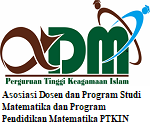Analysis of Society Satisfaction of The E-Toll System In Indonesia Based On Structural Equation Model
DOI:
https://doi.org/10.15642/mantik.2021.7.2.115-123Keywords:
Structural Equation Modelling, Society satisfaction, e-toll system, Innovation, Infrastructure developmentAbstract
The implementation of the use of the e-toll system has several evaluations from the community. This evaluation affects community satisfaction with the e-toll system. It is important to know public satisfaction so that the government can evaluate what factors are lacking from the e-toll system so that the service is better. In this study, the method used in the satisfaction analysis is Structural Equation Modeling (SEM). This study uses data based on the results of online questionnaires that have been tested for validity and reliability. In this study, the dimensions of service quality were assessed from the elements of reliability, responsiveness, assurance, empathy and physical evidence. Based on the results of the study, the community is satisfied with the use of the e-toll system on toll roads. However, there are two of the five dimensions of service quality that are very significant, namely the dimensions of reliability and assurance. For this reason, the government needs to pay more attention to reliability and provide guarantees for the e-toll system.
Downloads
References
R. Larry, Structural Equation Modeling (SEM) Concepts, Applications, and Misconceptions. New York: Nova Science Publishers, 2015.
M. Ahmad, A. Zainol, N. M. Darus, Z. Marzuki Matt, F. Baharom, and M. Y. Shafiz Affendi, “Knowledge transfer in problem-based learning teaching method in software engineering education: A measurement model,” ARPN J. Eng. Appl. Sci., Vol. 10, No. 3, pp. 1486–1493, 2015.
M. Z. Yusoff, M. Mahmuddin, and M. Ahmad, “A knowledge work productivity conceptual model for software development process in SME,” ARPN J. Eng. Appl. Sci., Vol. 10, No. 3, pp. 1123–1130, 2015.
M. Ahmad, N. M. Zani, and K. F. Hashim, “Knowledge sharing behavior among flood victims in Malaysia,” ARPN J. Eng. Appl. Sci., Vol. 10, No. 3, pp. 968–976, 2015.
K. F. Hashim, S. H. Ishak, and M. Ahmad, “A study on social media application as a tool to share information during flood disaster,” ARPN J. Eng. Appl. Sci., Vol. 10, No. 3, pp. 959–967, 2015.
R. Hoyle, Automated structural equation modeling strategies. 2016.
M. F. F. Mardianto, D. R. Hastuti, D. A. Husada, and R. Andriawan, “Comparative analysis of the competitiveness between Indonesian movies against international movie, as a reference in developing Indonesia’s cinema and curriculum about cinematography,” Int. J. Innov. Creat. Chang., Vol. 5, No. 3, pp. 685–707, 2019.
S. McQuitty and M. Wolf, “Structural Equation Modeling: A Practical Introduction,” J. African Bus., Vol. 14, No. 1, pp. 58–69, 2013, DOI: 10.1080/15228916.2013.765325.
R. E. Schumaker and R. G. Lomax, A beginner’s guide to structural equation modeling, Second. New Jersey London: Lawrence Erlbaum Associates, 2005.
A. Anekawati, B. W. Otok, Purhadi, and Sutikno, “Structural Equation Modelling with Three Schemes Estimation of Score Factors on Partial Least Square (Case Study: The Quality of Education Level SMA/MA in Sumenep Regency),” J. Phys. Conf. Ser., Vol. 855, No. 1, 2017, DOI: 10.1088/1742-6596/855/1/012006.
S. Kumar, “Structure Equation Modeling Basic Assumptions and Concepts: A Novices Guide,” Asian J. Manag. Sci., Vol. 03, No. 07, pp. 25–28, 2015.
D. L. Streiner, “Finding our way: An introduction to path analysis,” Can. J. Psychiatry, Vol. 50, No. 2, pp. 115–122, 2005, DOI: 10.1177/070674370505000207.
B. M. Byrne, Structural Equational Modeling with AMOS blue book. 2010.
Kuzairi, M. F. F. Mardianto, Mawaddah, Ahmad, H. Sakdiyah, and Faisol, “Analysis of Factors Affecting Youth Motivation in Madura to Improve Education with the Structural Equation Modeling Method,” Vol. 410, No. 1, pp. 268–271, 2020, DOI: 10.2991/assehr.k.200303.065.
A. N. Zulkifli, M. Ahmad, J. A. Abu Bakar, R. C. Mat, and N. M. Noor, “Examining the influence of interactive persuasive learning among elderly,” ARPN J. Eng. Appl. Sci., Vol. 10, No. 3, pp. 1145–1153, 2015.
A. Banerjee and S. Chaudhury, “Statistics without tears: Populations and samples,” Ind. Psychiatry J., Vol. 19, No. 1, 2010, DOI: 10.4103/0972-6748.77642.
S. K. Thompson, Sampling, Third. New Jersey: John Wiley & Sons, Inc., Publication, 2005.
N. Showkat and H. Parveen, “In-depth interview: Quadrant-I (e-Text). ”August 2017.
J. Tejada and J. Punzalan, “On the misuse of Slovin’s formula,” Philipp. Stat., Vol. 61, No. 1, pp. 129–136, 2012.
R. Lupiyoadi, Manajemen Pemasaran Jasa: Teori dan Praktik. Jakarta: PT. Salemba Emban Patria, 2001
Downloads
Published
How to Cite
Issue
Section
License
- Authors retain copyright and grant the journal right of first publication with the work simultaneously licensed under a Creative Commons License that allows others to share the work with an acknowledgment of the work's authorship and initial publication in this journal.
- Authors are able to enter into separate, additional contractual arrangements for the non-exclusive distribution of the journal's published version of the work (e.g., post it to an institutional repository or publish it in a book), with an acknowledgment of its initial publication in this journal.
- Authors are permitted and encouraged to post their work online (e.g., in institutional repositories or on their website) prior to and during the submission process, as it can lead to productive exchanges, as well as earlier and greater citation of published work







.png)




